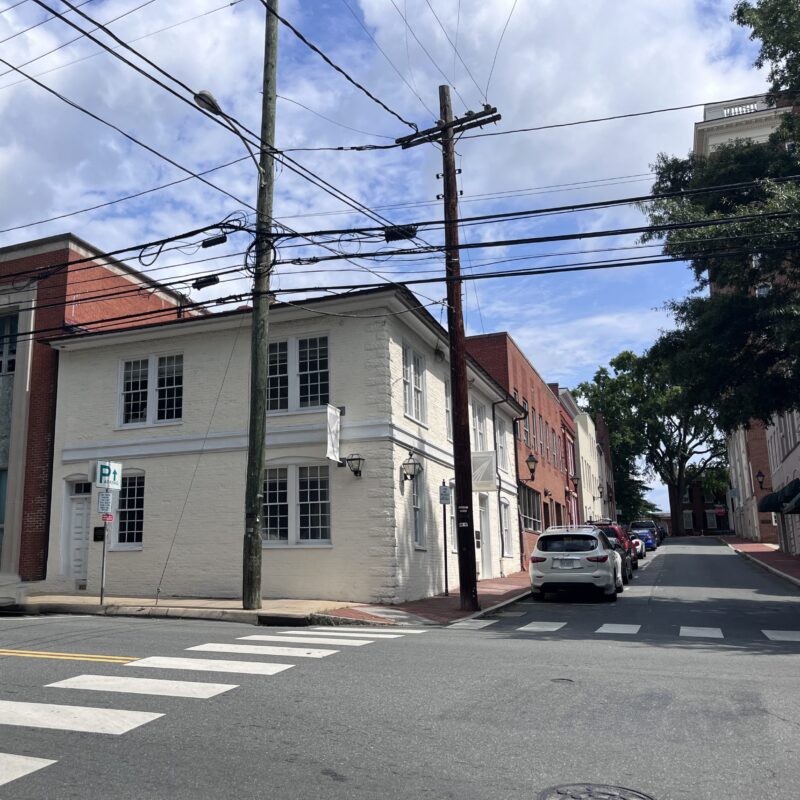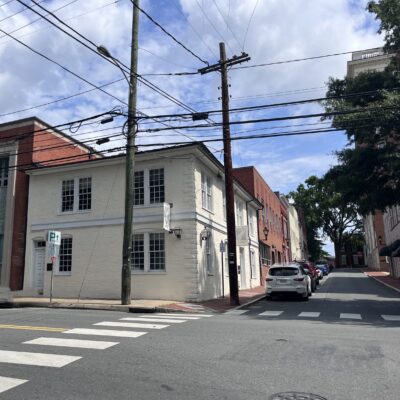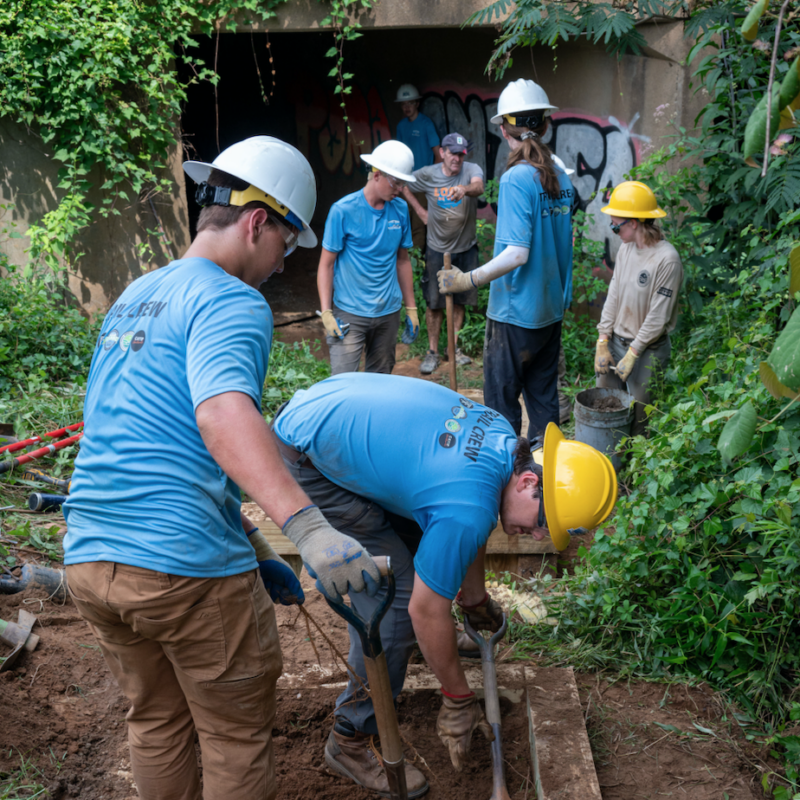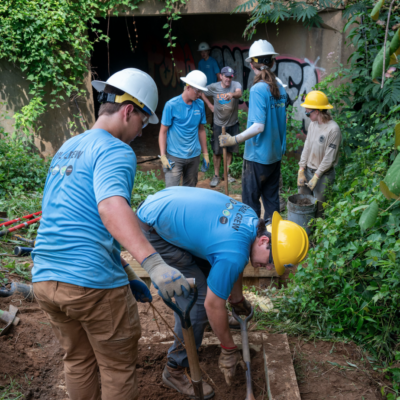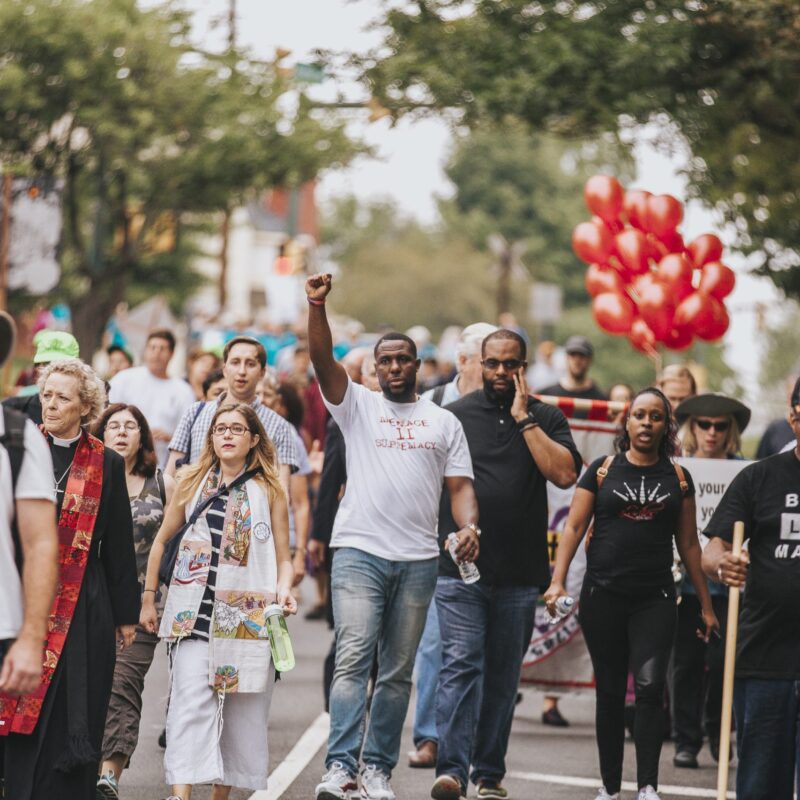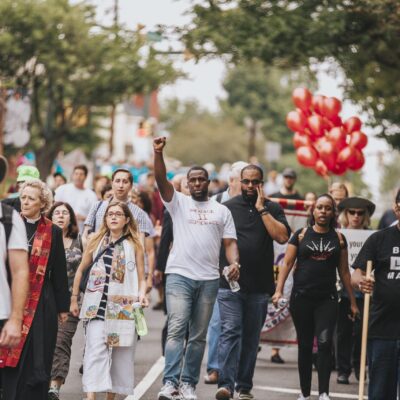My first bike was fiery ruby red with elegant white fringes, a woven basket in front and a high-pitch bell. I remember using it to alert my parents that I was coming or going. I was 5 years old and pedaling on my own for the first time. These days, I am not what you would call an avid biker. Sure, I take it to West Main Street from time to time, but it’s more like the bike is taking me around, rather than the contrary.
But I can’t help but notice what seems in the past couple of months to be a prevalence of cyclists. People on commuter bikes, racing bikes, mountain bikes, you name it. It could be a matter of fighting rising gas prices; it could be a matter of finally being motivated to get healthy. “Leave the four-wheel monster behind, and join the two-wheel movement,” these helmeted commuters seem to be saying.
 |
Indeed, research from the Automobile Club of Southern California puts the cost of driving in the United States at 54.1 cents per mile. The American Automobile Association (AAA) estimates that in 2008 the cost of owning and driving a small sedan (your Honda Civics, Toyota Corollas and Chevy Cobalts) for 15,000 miles is $8,121 compared to last year’s $7,823.
Then there’s the whole green consideration. The U.S. has been the largest emitter of carbon dioxide emissions for decades. According to the Carbon Dioxide Information Analysis Center, the U.S. has emitted 1,650 million metric tons of carbon in 2004 and almost 88 billion metric tons of carbon since 1800 from fossil-fuel consumption. Per capita, the U.S. consumes 5.32 metric tons of carbon annually.
Naturally, a place like Charlottesville, with its LEED-certified Transit Center and focus on promoting car-free living in the heart of the city, could be expected to be an early adopter in promoting and supporting two-wheel living.
Well, it is and it isn’t. In May 2008 the city received a medal to honor its efforts to make the city bicycle-sensitive. The League of American Bicyclists awarded it the bronze medal as a Bicycle Friendly Community. Sounds pretty good until you realize that bronze is the bottom tier, below silver, gold and platinum. Bronze. Twenty-two communities have been designated bicycle-friendly this year: three new additions to the silver status, eight for the bronze and 11 renewed their designation at the same level, with the exception of Portland, Oregon, which moved from gold to platinum. These winners bring the total number of bicycle-friendly communities to 84.
The league awards this four-year designation to municipalities that show improvements in the effort “to integrate bicyclists into the community.” Charlottesville, in short, was put to the test in five areas: education of children and adults about the world of cycling; engineering that included bicycle-friendly infrastructure (bike lanes and paths in the overall transportation plan); enforcement, by police, of bicyclists’ dos and don’ts; encouragement in participation of the annual Bike Month and other biking activities, and finally, evaluation of bicycling programs in the city’s master plan.
It’s nice to get noticed, but let’s be real, it’s not good enough. Charlottesville thinks two-wheel, but definitely acts four-wheel. In other words, we’d like to think we’re a bike-friendly town, but, ask most cyclists, cars really rule the day. “I’d like to have the platinum designation,” says Mayor Dave Norris. “The future is in trying to create a more broad network of lane trails.” At present, the only city with platinum credentials is Portland, the Amsterdam of America.
They’re in heaven
“We have traffic jams in the morning on the southeast bridge,” says Karl Rohde, government relations director for the Portland-based Bicycle Transportation Alliance. “A traffic jam of bicycles.” What else would you expect of a place where 6 percent of commuters use their bikes daily? “But if you count in the occasional commuters, we reach 40 percent,” says Rohde. Four-oh percent. On 10 of 12 major bridges in the city, Rhode says, “we see 15,000 crossings by bike each day,” an increase of 21 percent since 2006.
For Charlottesville to reach the level of Portland that Norris wishes for, we’d have to start with attitude and then the infrastructure to back it up. “There is no silver bullet,” says Rohde. “It’s the commitment of the people to the city of Portland that goes beyond bike lanes.” Bicycle-related infrastructure in the city is incorporated into the daily life of commuters, with multiuse bike paths and bike lanes in all major and minor arteries that feed downtown Portland.
Portland’s bike culture isn’t anything new. In 1971, a representative from the southern Oregon town of Jacksonville sponsored legislation that today is known as the Bicycle Bill. Don Stathos required the state to set aside 1 percent of its highway and transportation funding for bicycle and pedestrian developments. But one of the most important aspects of Stathos’ bill was its attempt to establish bicycle rights. Rohde says that that single piece of legislation is behind everything two-wheel in Portland. “It made everything else today possible.”
Two-hundred and eighty miles of bike lanes lace through Portland. There are about 10 miles of bike lanes in Charlottesville. Sure, the population of Portland is 14 times ours, but even if our city were to gain 530,000 residents in a matter of seconds and become the size of Portland, by that ratio it would still have halve the number of bike-lane miles: 140 miles.
Are there any signs that Charlottesville could mimic Portland and get that Platinum standing? Charlottesville is home to myriad bicycle clubs: the Charlottesville Bicycle Club, the Charlottesville Area Mountain Bike Club, the Charlottesville Family Bike Club, the Charlottesville Racing Club, a chapter of the USA Cycling Club, and Monticello Velo Club. It is a fact: People in town like to ride. A lot. But many I interviewed complained about the lack of infrastructure.
That’s where the Alliance for Community Choice in Transportation (ACCT) comes into play. It was this network of citizens, in fact, that submitted the application for Bicycle Friendly Community to the League. “We are bike friendly,” says Zachary Shahan, executive director of ACCT. “But we can be so much more in terms of innovative infrastructure.” Shahan wants colored bike lanes to surround the city—an “impressionistic” approach. He wants bike boxes at every traffic light, bike boulevards that run parallel to major roads and arteries alike and a sophisticated bike-sharing program (one that works, that is).
The best thing the city can do now for the future, says Mayor Norris, is limit the number of bikes on the road. “Take them off the road to designated bike trails so that they don’t share the roads with cars.” The Rivanna Trail is a good place to start, he says. Since 1992 the Rivanna Trails Foundation has managed to complete 20 miles of hiking trails in the outskirts of the city with few public rights-of-way bordering private property. Though everyone I have talked to doesn’t even mention it. It doesn’t seem practical for the daily commuter. Each portion of the trail runs for just over a mile before it reaches a piece of federal concrete. And the terrain is rough, not very compatible for the average commuter.
 UVA professor Adam Goldfarb, who commutes daily by bicycle, says he is cynical about what the City Council can do to make the roads better. “They have to choose one thing to do at a time,” he says. |
According to the city, there are more than 105 million square feet of impervious surface in Charlottesville. These surfaces are any surface that does not absorb water: roads and parking lots, among others. So, it shouldn’t be so hard to find places to build bike lanes. Norris says the Council has designated bike lanes along the 250 Bypass from Dairy Road continuing to McIntire Road that will run parallel to McIntire and extend all the way north to the Belvedere subdivision. The plan, says Norris, is to have this infrastructure in place as fast as possible. The City Council designated $250,000 to build the bike lane and the project should be completed by summer 2009. “This trail will end at the railroad track until/unless we get funds to build a bridge, which we are working on now,” says Chris Gensic, full-time parks and trail planner for the city.
This construction is contingent upon the completion of the Meadowcreek Parkway. When the bridge will be completed, the east-west trail along Route 250 will connect to a north-south trail. That trail will include what is now Schenks’ Greenway on McIntire Road and what will be Meadowcreek Parkway’s trails to Rio Road.
An unpleasant ride
Emboldened by memories of my 5-year-old fearless self on that first bike, perhaps, I figured I’d give the Rivanna a spin myself, since there’s so much hope invested in it. I fastened my helmet, positioned my water bottle, and I was ready to go. I entered from Route 250 at Free Bridge in the direction of Holmes Avenue, down Holmes Avenue and on to Park Street and the underpass.
It’s true, the Rivanna Trail is a pleasant ride: green surroundings, nice pedestrians, but not many cyclists. But the trail seemed detached from the roads, not only physically, but socially, too. The intent of bike advocates here and around the country is to assimilate bike ridership into the daily routine of motorists. The Rivanna Trail hides the bikers and, as my grandmother used to say, away from the eye is away from the heart. It doesn’t go very far in making that attitude adjustment that they credit in Portland, either.
O.K., so a platinum designation is way out of reach. What about a silver? Arlington renewed its silver status in October 2007. The League cites Arlington’s integrated network of infrastructure as the highlight. The network is used by more than 90 percent of its residents. The average commuter need not travel more than a quarter mile to find a designated bike facility. Here in town, it’s hard to find bike lanes, and when you find one, poof, it disappears before your eyes. Norris says that the city has had a longstanding policy that all new roads would accommodate a bike lane or bike path, if there is space. “Almost every new road in the city has added bike lanes,” he says. Most of these lanes, however, are not stand-alone bike facilities, for they share their precious space with cars. “Of course, we can’t eliminate parking spaces,” says Norris.
Ideally, the ACCT would like to see the 3 to 5′, all-white bike lanes replaced with wider and colored ones. “People don’t recognize the lanes sometimes,” says Shahan. “Most of the time they are filled with rubbish and debris; they’re trash cans.” Bike advocates in town want to see bike lanes prioritized, as stated in the Bike Masterplan. “We want them to be 6′-wide and colored, just like in the Netherlands,” he says. More protection for the bikers could mean more of them on the road. “Limiting auto access in the city will upset a lot of people, but I am willing to say that is the best investment for our community,” says Shahan.
Right now, the city’s Parks and Recreation department gets $100,000 per year for trails for use both in parks and between schools and Downtown. Gensic says that in 2007 Council directed $250,000 to the creation of bike trails along U.S. 250 and $50,000 into traffic signals that would enable bikers to be better seen by drivers.
But the city’s grandiose plan is a maze of progressive transit policies and a nostalgic historical connection with—who else?—Thomas Jefferson. “The future of Preston Avenue is the key,” says Norris. The city intends to create a dedicated bike lane path along Preston Avenue that would trail from Downtown through the Coal Tower and all the way up to Monticello, for a price tag of $400,000. “We want to get people outdoors,” says Norris. “It’s also an historical measure, so that people can follow in the footsteps of Jefferson.”
 |
But it’s likely that until that happens, Mayor Norris himself will not be among the daring bike faithful of Charlottesville. “I was hit by a van on Main Street a while ago,” he says. “I wasn’t hurt too bad, but it rattled me, and I am not an avid biker anymore.” That was about eight years ago, when motorists were not used to sharing the road with anything smaller than a two-door coupe. Eight years later, arguably not much has changed. On my city ride, I was forced to brake to give way to a Toyota Tundra, which, from my point of view, resembled an 18-wheeler. I planned to turn onto Jefferson Park Avenue when the pickup cut me off. In a matter of seconds I was surrounded by what looked like a million cars honking. I could have grabbed my heart by how fast it was beating. I was scared. I forcefully pedaled my way off that devil’s intersection and descended on JPA towards UVA Hospital. At that moment, I was ready to put the bike down, and give myself to the motorized world completely. There was no bike lane from West Main Street into JPA. Where there are bike lanes, they end after half a mile.
Let’s take West Main Street. If you ride from UVA to Downtown, you find yourself in and out of danger, depending on where the bike lane ends and where it starts again. One of the most dangerous intersections, at the Lewis and Clark and Sacagawea statue, has no bike lane. One closes one’s eyes and prays for the best. Right after the intersection, the bike lane starts again, and the only attempt to recognize the awkwardness of bike lanes that start and end is a yellow sign that reads, “Share the road.”
And even if you can get where you want to go on your bike and brave the crazy here-one-minute-gone-the-next bike lanes, there’s the matter of where to put your two-wheeler. There are about 150 bike racks in the city, says Gensic, but they are not all owned by the city. Most are at UVA. The city has recently added 20 bike racks on the Downtown Mall, and Gensic says he has been getting more and more inquiries from businesses interested in buying bike racks for their employees. But there are not nearly enough.
Lessons to be learned
UVA is trying to encourage more bike commuting, as evidenced by its numerous bike racks and buses that, by the end of the fall semester, will come outfitted with bike carriers. A 2006 survey counted 210 bike racks representing 3,224 bicycle parking spots around Grounds. One third of these are located outside on-Grounds housing and are managed by UVA personnel. School officials say this is a conservative estimate if one considers that in some locations multiple racks are counted as one and ultimately, several recent buildings have added bike racks and have not been counted.
To lure students into being car-free, UVA Parking and Transportation has created a bicycle map that highlights suggested bike routes from highly dense student housings to Grounds.
And yet, a guy like Adam Goldfarb remains in the minority at UVA. “I hate the way bike lanes are sometimes,” he says. “There are parked cars inside the bike lanes and you have to stop, look around and make sure it’s safe to pass them.” Despite this, Goldfarb, an associate professor in the department of pathology, has been commuting to work on his bike for 10 years. “I ride 1.5 miles every day,” from his home near Rugby Road to the UVA Medical Center. “It takes me five minutes in the morning to go to work, but about 20 to come back in the evening,” he says. The reason? You guessed it: traffic. With no bike lanes directly adjacent to Rugby Road, Goldfarb needs to brake as much as cars do, but he needs to be more careful. “I love Charlottesville, I really do, but it’s very bad for biking,” he says.
Goldfarb has traveled around the country and lived in a few places before settling here. “Minneapolis is a bike heaven,” he says, where he used to ride without fear of being run over. “Here there are not enough bike trails, you have to stay away from Route 29 and the shopping centers are 100 percent inaccessible.”
I crossed myself before merging in the traffic of Route 29. I wanted to go past Barracks Road Shopping Center and ride along to the soundtrack of screeching tires and honking, but as soon as I started pedaling past Barracks Road, I realized this was going to kill me. Cars were flying by me, scraping off precious safety inches between their cold metal and my flesh. Not in a million years had I ever thought an Arby’s could save me. I entered the parking lot and called for back up. My Route 29 adventure ended miserably after a little more than three miles. And there are other trouble spots.
“Biking on Ivy Road is going to kill you,” says Goldfarb. I decided to blindly believe him and move on. I didn’t want a repeat of my near-death experience.
So, developing a taste for bike commuting in Charlottesville takes a lot more than childhood memories of happy peddling. Infrastructure, attitude, education—there’s a lot to master to get to the platinum level. Goldfarb, like others, doesn’t expect change any time soon. His cyncism about what City Council can do to make improvements is echoed by others. “Do I think this will get better? Wishful thinking yes, realistic thinking no,” he says.
